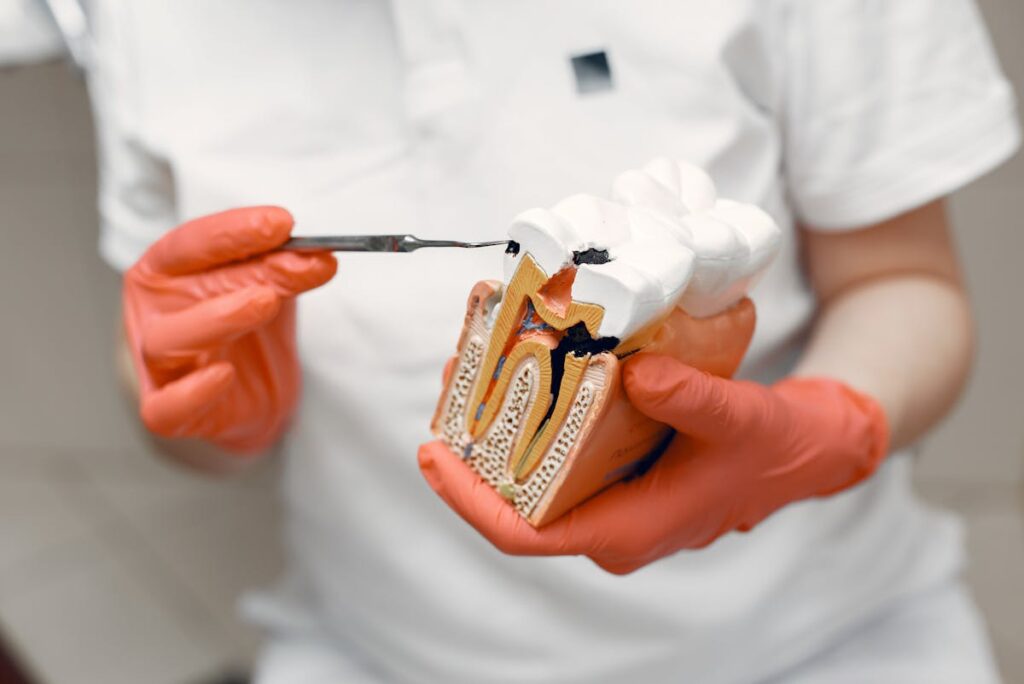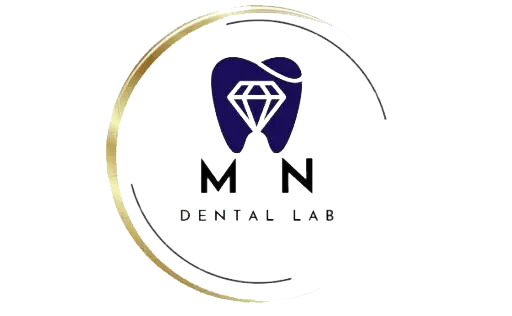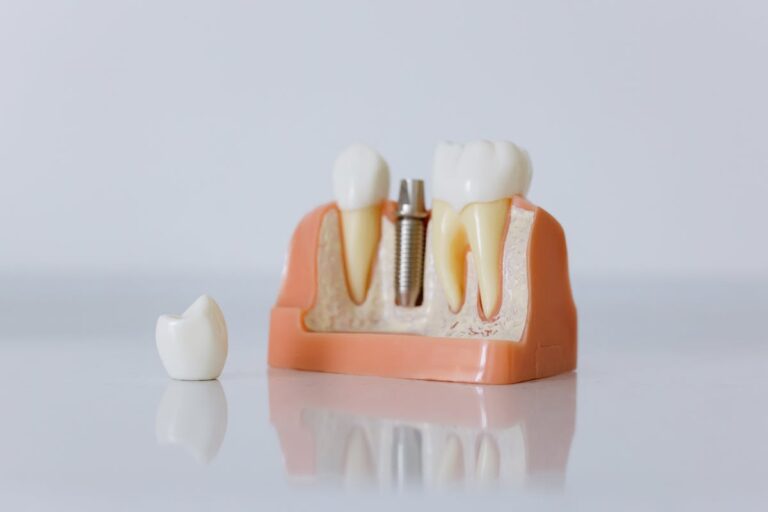Dental implant procedures in Lincoln Park offer patients a reliable solution for missing teeth through advanced medical technology and precise surgical techniques. The multi-stage process combines thorough planning, skilled surgery, and careful recovery monitoring to guarantee ideal results. While the prospect of dental implant surgery may create anxiety for some patients, understanding each phase of the procedure helps establish realistic expectations and leads to better outcomes. The following information outlines the complete implant journey from initial consultation to final restoration.
Initial Consultation and Treatment Planning
Before any dental implant procedure begins, patients undergo a detailed consultation with a qualified implant dentist in Lincoln Park. During this initial visit, the dentist conducts a thorough examination of the patient’s oral cavity and reviews their dental history background to assess candidacy for implants.
The consultation includes detailed imaging studies, such as 3D scans and X-rays, to evaluate bone density and identify anatomical structures. The dentist also discusses potential health concerns, including diabetes, smoking habits, or medications that could affect healing. Based on these findings, the dental team develops a customized treatment plan outlining the number of implants needed, bone grafting requirements if necessary, and expected timeline for completion. The dentist then presents treatment options, associated costs, and addresses any questions or concerns the patient may have.
Comprehensive Dental Examination
The thorough dental examination begins with detailed X-rays and digital scans to evaluate bone density, jaw structure, and surrounding tissues. These advanced imaging techniques provide the dental team with precise measurements and three-dimensional views necessary for accurate implant placement. Based on the diagnostic results, the dentist develops a customized treatment plan that addresses the patient’s specific oral anatomy and restoration needs.
X-Rays and Digital Scans
During initial dental implant consultations, extensive diagnostic imaging plays a pivotal role in treatment planning. The dentist utilizes advanced X-ray technology and digital scanning methods to obtain detailed views of the patient’s oral structures. These images provide essential information about bone density, nerve locations, and anatomical features.
Modern digital X-ray systems offer superior image clarity while minimizing radiation exposure compared to traditional radiographs. The dentist typically orders panoramic X-rays to view the entire mouth and may require cone beam computed tomography (CBCT) scans for three-dimensional visualization. Digital intraoral scans create precise maps of the teeth and surrounding tissues, enabling the dental team to plan ideal implant placement. This thorough imaging process helps determine implant size, position, and whether additional procedures like bone grafting are necessary.
Treatment Plan Development
Based on thorough diagnostic imaging results, dentists formulate customized treatment plans through meticulous oral examinations. During the initial evaluation, dental specialists assess bone density, gum health, and existing teeth to determine implant feasibility and ideal placement locations.
The comprehensive treatment plan outlines specific procedural steps, including any preliminary treatments such as bone grafting or tooth extractions that may be necessary before implant placement. Dentists present patients with detailed treatment options, discussing factors such as implant type, materials, and estimated healing timeframes. The plan also addresses potential complications, required maintenance, and post-procedure care protocols. This systematic approach guarantees patients understand the full scope of their dental implant journey while establishing clear expectations for successful outcomes.
Bone Grafting (If Required)
Bone grafting, a critical prerequisite for some dental implant patients, utilizes materials such as autografts from the patient’s own body, allografts from human donors, or synthetic substitutes to build up insufficient jaw bone density. The grafting procedure involves carefully placing and securing the chosen material to the deficient bone area while ensuring proper blood supply and tissue integration. The healing period typically ranges from 4 to 6 months, during which new bone forms and strengthens, creating a stable foundation for the future implant.
Bone Grafting Materials Used
When bone grafting becomes necessary for dental implant procedures in Lincoln Park, practitioners may utilize several types of grafting materials. The primary options include autografts harvested from the patient’s own body, typically from the hip or jaw, and allografts derived from processed human donor bone. Xenografts, sourced from bovine or porcine bone, offer another viable alternative.
Synthetic materials, known as alloplasts, feature porous bone substitute materials that promote new bone growth through their osteoconductive properties. These biocompatible substances include calcium phosphate, bioactive glass, and hydroxyapatite. The selection of grafting material depends on factors such as the defect size, patient’s medical history, and the specific requirements of the implant site. Each material type offers distinct advantages with regard to integration, healing time, and structural support.
Healing and Recovery Time
Depending on the complexity and extent of bone grafting required, healing periods typically range from 3 to 6 months before dental implant placement can proceed. During this critical healing phase, patients must follow specific post-operative instructions to guarantee optimal bone integration and minimize complications.
Pain management protocols typically include prescribed medications for the first few days, followed by over-the-counter pain relievers as needed. Dietary restrictions are essential during the initial healing stage, with patients advised to maintain a soft food diet and avoid chewing near the surgical site. Most patients can return to normal activities within 2-3 days, though strenuous exercise should be avoided for at least one week. Regular follow-up appointments allow the dental team to monitor healing progress and determine when the site is ready for implant placement.
Grafting Procedure Steps
The initial phase of dental implant bone grafting involves meticulous preparation of the recipient site through careful surgical exposure of the deficient bone area. Following bone density assessment, the surgeon places biocompatible grafting material into the prepared site using specialized instruments.
The procedure typically employs guided bone regeneration techniques, where a protective membrane is positioned over the graft material to prevent soft tissue ingrowth and promote ideal bone formation. The surgeon then secures the grafted area with small titanium pins or sutures to guarantee stability during the healing process. Local anesthetic administration and proper sterile conditions are maintained throughout the procedure. Patients undergo regular monitoring during the subsequent months as new bone tissue gradually integrates with the grafting material, creating a stable foundation for the future implant.

Preparing for Your Implant Surgery
Before undergoing dental implant surgery, patients must complete several important preparatory steps to guarantee favorable results. The dental team will conduct a thorough evaluation, including X-rays and 3D imaging, to assess bone density and determine ideal implant placement. Patients receive detailed post-operative instructions and pain management protocols to follow after the procedure.
Medical history review is essential, as certain conditions may affect healing. Patients taking blood thinners or specific medications may need to adjust their dosage. Smoking cessation is strongly recommended at least two weeks before surgery, as tobacco use can impair healing and increase complications. The night before surgery, patients should fast for 8-12 hours if receiving IV sedation. On the day of the procedure, wearing comfortable clothing and arranging transportation home is advised.
The Dental Implant Placement Procedure
During dental implant placement, a skilled oral surgeon follows a precise, multi-step surgical protocol under sterile conditions. The procedure begins with anesthesia administration, ensuring patient comfort throughout the surgery. Local anesthetic is typically used, though sedation options are available for anxious patients.
The surgical technique involves creating a small incision in the gum tissue to expose the jawbone. The surgeon then carefully drills a precise hole to accommodate the implant’s dimensions. The titanium implant post is inserted into the prepared site and positioned for ideal integration with the bone. Once properly placed, the surgeon may attach a temporary healing cap and suture the gum tissue. The entire procedure typically takes 1-2 hours per implant, depending on the complexity of the case.
Recovery and Healing Period
Following dental implant surgery, patients enter a critical healing period known as osseointegration, where the titanium implant fuses naturally with the surrounding jawbone. This process typically takes 3-6 months, during which patients must follow specific aftercare instructions to guarantee optimal healing.
Post-operative discomfort and minor swelling are common in the first few days after surgery. Swelling management includes applying ice packs to the affected area and keeping the head elevated while resting. Most patients can return to work within 2-3 days, though strenuous activities should be avoided for at least a week.
Patients must maintain meticulous oral hygiene while being gentle around the surgical site. Regular follow-up appointments allow the dentist to monitor healing progress and address any concerns before the final restoration is attached.
Placing the Abutment
Once osseointegration is complete, the dental surgeon exposes the implant and attaches the abutment, which serves as the connecting piece between the implant and the final crown restoration. The abutment placement requires a minor surgical procedure performed under local anesthesia, where the gum tissue is reopened to access the implant.
After securing the abutment, the surgeon evaluates its integrity through various tests to confirm proper placement and stability. The surrounding gum tissue must heal for approximately two weeks before the final crown can be attached. During this period, temporary crown adjustment may be necessary to maintain proper spacing and alignment. The healing process around the abutment is indispensable for achieving ideal aesthetic results and guaranteeing long-term success of the dental implant restoration.
Final Crown Installation
After the abutment site has fully healed, the dentist takes detailed impressions of the patient’s mouth to create a custom-fitted permanent crown. For those considering dental implants in Lincoln Park, this stage is crucial to ensuring a natural-looking and functional restoration. These impressions serve as the blueprint for the customized crown fabrication process, guaranteeing ideal fit and aesthetics.
During the final implant restoration appointment, the dentist carefully examines the crown’s color, shape, and fit before permanently securing it to the abutment. They make any necessary adjustments to guarantee proper bite alignment and comfortable function. The crown is then attached using dental cement or screwed directly onto the abutment, depending on the specific implant system used.
Once secured, the crown functions like a natural tooth, allowing the patient to eat, speak, and smile with confidence. Regular dental check-ups help maintain the longevity of the final restoration.
Long-Term Care and Maintenance
The long-term success of dental implants depends on proper maintenance and regular care. Patients must maintain an ongoing cleaning regimen that includes thorough brushing, flossing, and using antimicrobial mouthwash to prevent bacteria buildup around the implant site.
Periodic dental checkups are essential to monitor the implant’s stability and guarantee the surrounding gum tissue remains healthy. During these visits, dental professionals will examine the implant’s integrity, assess bone levels through X-rays, and perform professional cleanings to remove any accumulated plaque or calculus.
Patients should avoid smoking, excessive alcohol consumption, and grinding their teeth, as these habits can compromise implant longevity. With proper care and maintenance, dental implants can last for decades, functioning like natural teeth while preserving oral health.
Frequently Asked Questions
Can I Drive Myself Home After the Dental Implant Procedure?
Patients should arrange transportation post-implant surgery due to sedation effects. The recovery timeline varies, but driving is not recommended on the same day while pain management medications and anesthesia wear off.
Does Insurance Typically Cover Dental Implant Treatments?
Dental plan coverage for implants varies considerably among insurance providers. Basic plans typically offer limited or no coverage, while premium plans may cover 50-70% of costs, affecting overall implant affordability for patients.
How Long Do Dental Implants Typically Last?
The average lifespan of implants typically exceeds 25 years with proper maintenance. Potential longevity factors include oral hygiene, smoking habits, bite forces, and regular dental check-ups. Success rates exceed 95% for well-maintained implants.
Can I Get Multiple Dental Implants Placed During One Surgery?
Multiple dental implants can be placed during a single surgical procedure, depending on patient health, bone density, and implant placement timeline. Surgical procedure considerations and overall treatment planning determine the feasibility of simultaneous implant placement.
Is Age a Limiting Factor for Getting Dental Implants?
Dental implant age restrictions primarily concern lower age limits, when bone development completes. For adults, patient health considerations are more significant than age alone. Healthy individuals can receive implants well into their senior years.


